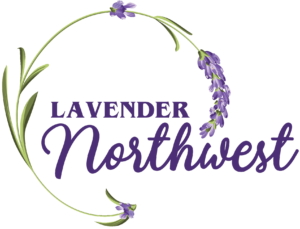No problem — let’s start with the basics.
“Lavender” itself can be a confusing term as it is often used very loosely to designate a wide variety of species within the Lavandula genus. In this article, we will focus on Lavandula angustifolia, often called “English lavender” (but don’t count on that nickname being used consistently). While there are many available cultivars, they all tend to grow as low shrubs, varying in size from dwarf to large, and displaying variable degrees of compactness. Colors of the bud casings and actual flowers range from deep to light purples and blues, as well as pinks and whites, and even sage-green hues on some buds. Besides their showy, ornamental value on display during late spring and summer bloom periods, these plants score points for decorative, culinary, fragrance, and even medicinal utility.
Location, location, location
This infamous real estate mantra has value when thinking about where to grow lavender. Originating in the Mediterranean region of the world, this plant is adapted to a warm, relatively dry climate, with abundant sun exposure. Once established, it has a reasonably good tolerance for limited drought. In fact, owing to lavender’s susceptibility to root rot and fungal diseases, water-logging the root zones is a reliable way to decimate your lavender plants! In relatively wet regions, it is critical for water to run off and not stagnate around the plants. An ideal site for lavender would be a south-facing slope with full sun exposure. Winters can present some added challenges to lavender survival, beyond excess water exposure. Frost is generally well-tolerated, but deep freezes will affect some cultivars adversely. Another injurious winter threat comes in the form of prolonged dry winds. In the United States, one can usually find cultivars of Lavandula angustifolia that will thrive in USDA hardiness zones 5 through 9.
Substrate
Lavender’s Mediterranean origins have hard-wired its preference for well-drained, relatively nutrient-poor soil that is more alkaline than most forest-region soils in the US. While it will grow in less-than-ideal soils, lavender will benefit from loosening up heavy clay with compost, and from dislodging some of the proton load in acidic soils by using agricultural lime preparations. A soil test will go a long way toward identifying specific deficiencies that may need to be corrected in order to support strong growth of lavender, particularly some of the essential micronutrients. Of course, lavender is no different than any other plant in terms of needing nitrogen, phosphate, and potassium sources, but it doesn’t like to be pushed hard with applied fertilizers. In general, modest applications of balanced fertilizer formulations (such as NPK 10-10-10) can be beneficial to lavender in particularly nutrient-deficient settings, which includes lavender growing in pots.
Water
Given a suitable place to grow, Lavandula angustifolia plants will develop deep and wide root systems that ultimately provide a good deal of resistance to drought-stress. Immature plants, however, will need sufficient water support until they become established over one or two growing seasons. To encourage vegetative and root development in the initial stage of lavender growth (summer seasons 1 and sometimes 2), cutting off any flower spikes as they appear is frequently advised. Once established, lavender plants will adapt to prevailing summer dry spells, but may benefit from watering during particularly hot and dry periods. As mentioned above, prolonged exposure to water-logged soil must be meticulously avoided.
Now that we’ve got some of the basics covered, gather up some lavender starts and get planting! Watch for Part II of this article where we’ll take on topics pertaining to the care for your new plants once they become established.
Contributed, edited & formatted by
Michael Lemmers
RavenCroft





